September 18, 2023
Welcome to Roundabouts Week, where we celebrate the innovative solutions that cities across the world are implementing to tackle congestion and enhance safety at intersections. Roundabouts come in many sizes (and, surprisingly, multiple shapes!), and every year we enjoy the process of pulling together some of our favorite recent roundabout projects as a way to celebrate the growing prominence of roundabouts as a method of intersection control. These projects are redefining the landscape of urban mobility and transportation planning and design, while reflecting a commitment to shaping safer and more efficient roadways for all.
2023 was a particularly exciting year for roundabouts, as the National Cooperative Highway Research Program (NCHRP) released a new roundabout guide that supersedes prior guides to become the nation’s new go-to resource for guidance on all aspects of roundabouts. Given how much research has been conducted since the publication of NCHRP Report 672, NCHRP saw the need for a new guide that would bring together the latest in roundabout research, best practices in the field, and advancements in transportation technology. You can read more about NCHRP Research Report 1034: Guide for Roundabouts here.
Speaking of research, another significant development for roundabouts was the release of the final rule on Public Right-of-Way Accessibility Guidelines (PROWAG). After more than two decades of research, revisions, and public comment, the final rule went into effect on September 7, 2023, documenting minimum accessibility standards at roundabouts and other elements of public right-of-way. Check out what we believe to be some of the most significant updates and additions in the final rule.
It’s meaningful for us at Kittelson to not only be involved in the research behind roundabouts, but also work with communities to implement this form of intersection control in a way that takes into account the context and needs of each community. Here are five projects from the past year that we were excited to contribute to.
Newport Avenue – Bend, OR
We mentioned roundabouts come in multiple shapes, and the City of Bend‘s new roundabouts on Newport Avenue are proof of that! Affectionately dubbed the “dogbone roundabouts” due to their unique shape, this pair of roundabouts supports the City of Bend’s growing reputation as a national leader in using roundabouts to solve congestion and safety issues at urban intersections.
Vehicle turning and pedestrian conflicts were occurring at the intersections of Newport Avenue and 11th and 12th Streets, intensified by poor roadway geometry and sight lines. What was it about this stretch of roadway that was causing more conflicts? We simulated a driver’s perspective, demonstrating that the driver viewshed opened abruptly when the Newport Avenue Market came into view, causing drivers to unconsciously be less focused on the things and people in front of them. The dogbone roundabouts were designed to uniquely fit the constrained intersections and guide drivers through 11th and 12th Streets by streamlining their viewshed.
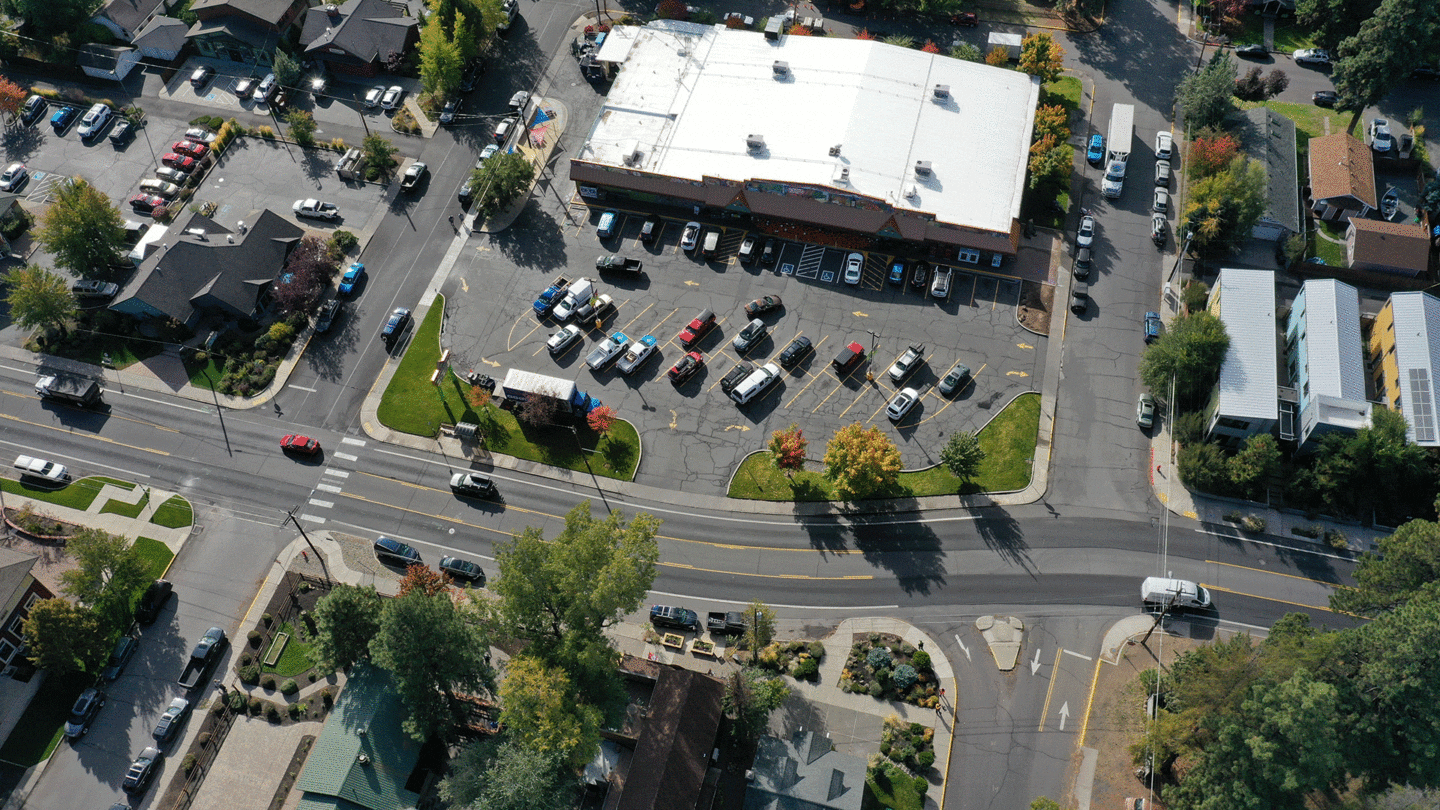
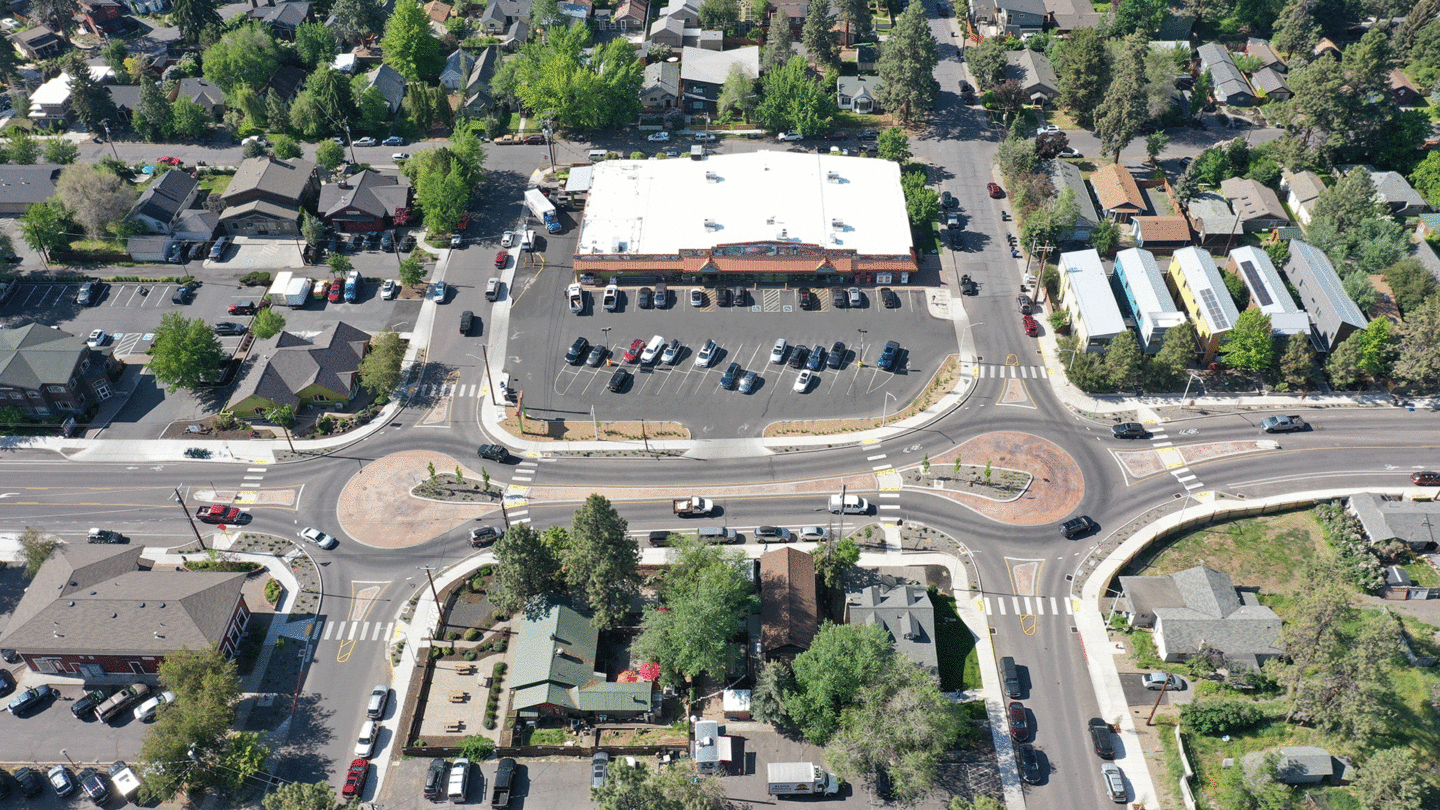
Learn more about how we applied driver psychology and landscape architecture to address Newport Avenue’s safety dilemma.
Harrisburg’s New 2nd Street Traffic Pattern – Harrisburg, PA
When Harrisburg’s 2nd Street was converted to a three-lane, one-way road in the 1950s, vehicular speeds increased, and 2nd Street divided the neighborhood, creating a barrier between the Riverfront and Uptown and Midtown Harrisburg. 2nd Street, with its three lanes of relatively high-speed traffic and long crossing distances, became a barrier to pedestrians, bicyclists, the elderly, and people with disabilities.
In 2022, the City of Harrisburg converted the street back to two-way operations, which was transformational for the neighborhoods on both sides of the street. The project involved numerous traffic calming elements, including a raised intersection, speed cushions, mini-roundabouts (with raised crosswalks), median refuge islands to provide two-stage pedestrian crossings, and curb extensions. 190 pedestrian ramps and numerous traffic signals were upgraded as well. We were excited to be involved in the upfront work that included a comprehensive multimodal traffic study, public involvement, Intersection Control Evaluations (ICE), and signing/pavement marking plans, and to lead the large study of the entire Uptown/Midtown section of Harrisburg.
A team member at the City of Harrisburg Bureau of Planning put it this way: “The 2nd Street project has been one of the most, if not THE most, transformative transportation project we’ve had during my decade-plus tenure with the City. It’s certainly worthy of accolades and recognition.”
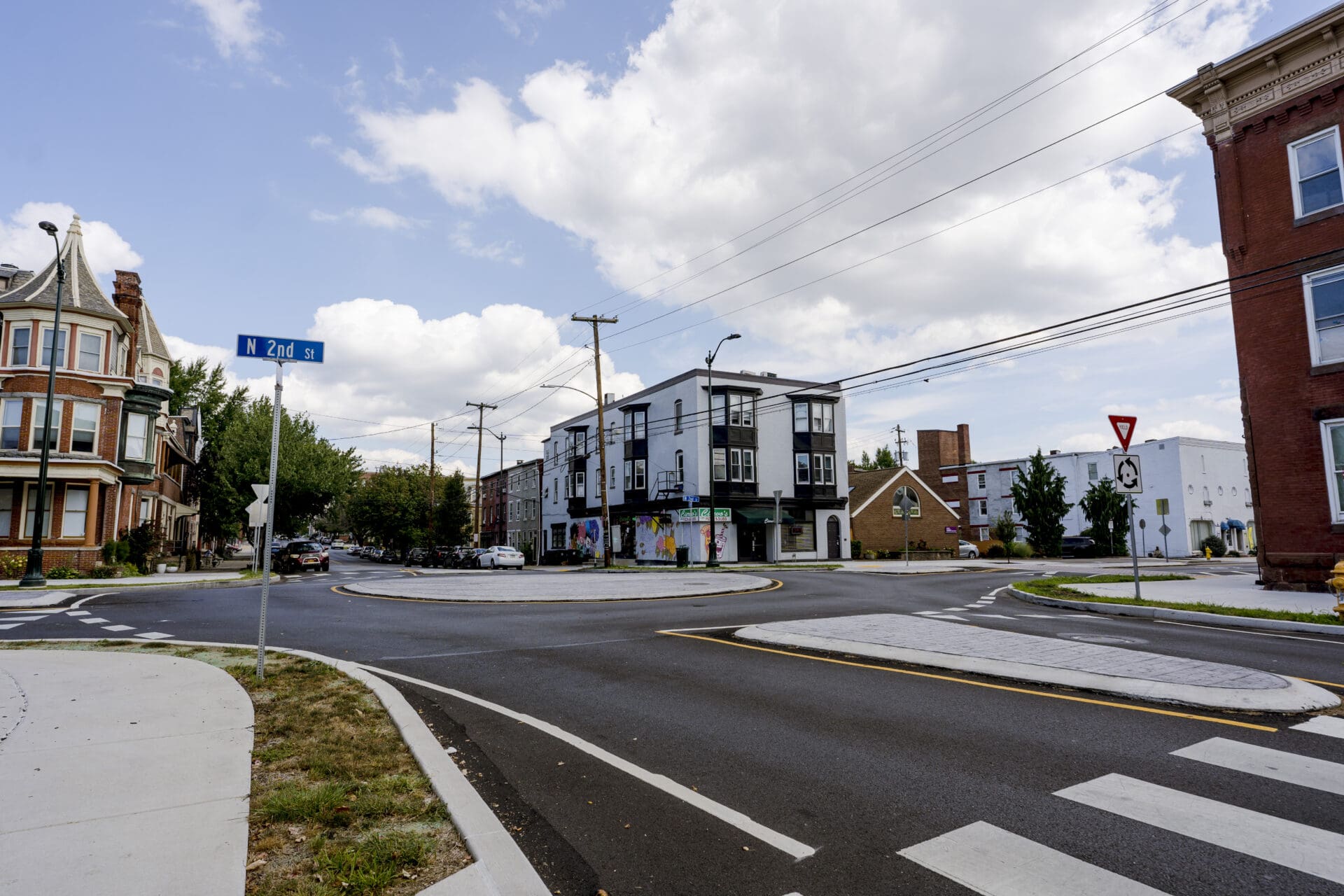
Using Design-Build for a Rapid Corridor Transformation – Bend, OR
When the Oregon Department of Transportation (ODOT) received federal funding for the Bend North Corridor project in 2019, they decided-for the first time in many years-to use the design-build project delivery method to meet the specific timeline needs of the grant.
Design-build is a method in which the agency develops a design concept, and the chosen contractor and designer work together to complete it. The design-build method can shorten the project timeline and allow for more innovation. ODOT opted to use the design-build method for the North Bend Corridor project in order to expedite the design and construction of a large number of improvements.
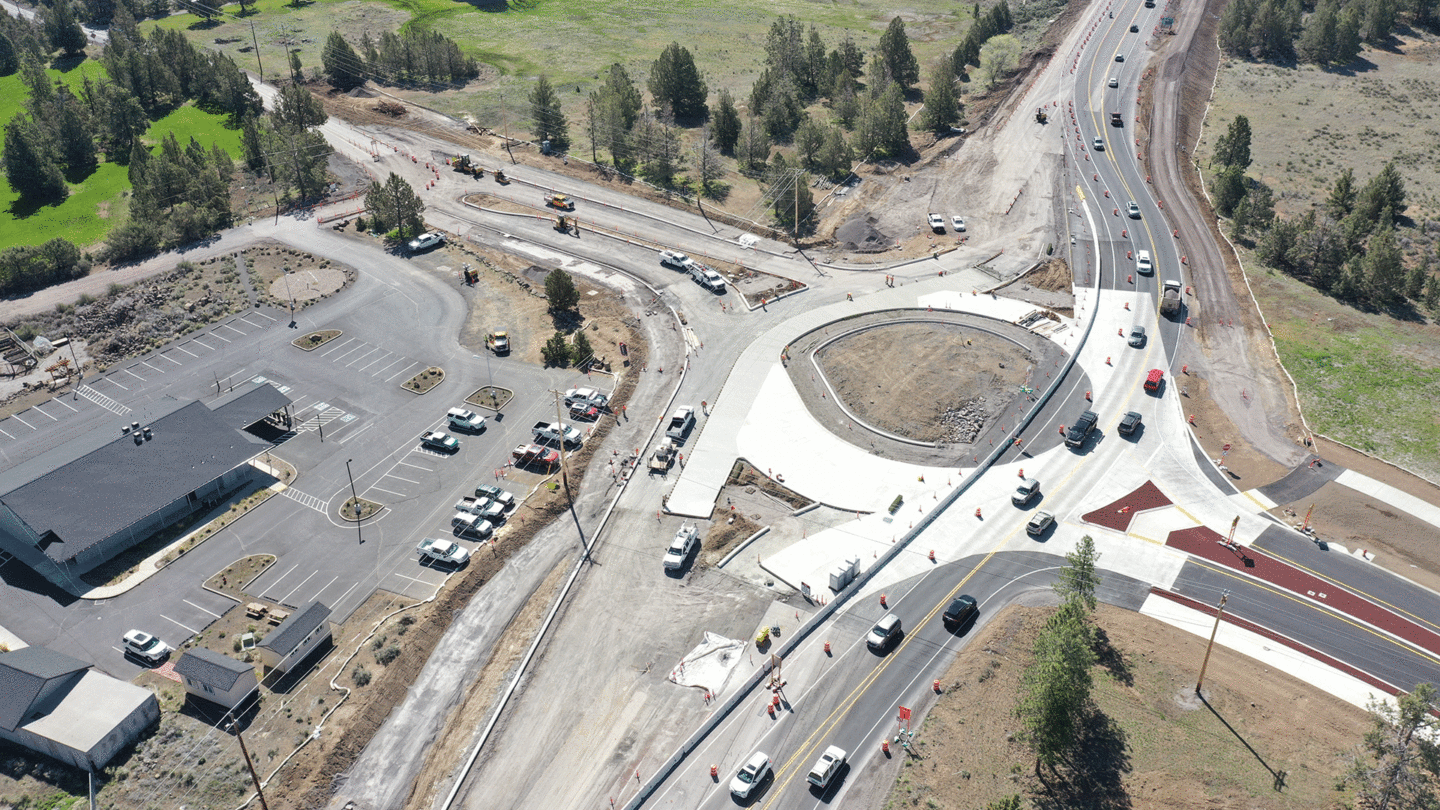
U.S. 20/Cooley Road roundabout construction on May 12th, 2023.
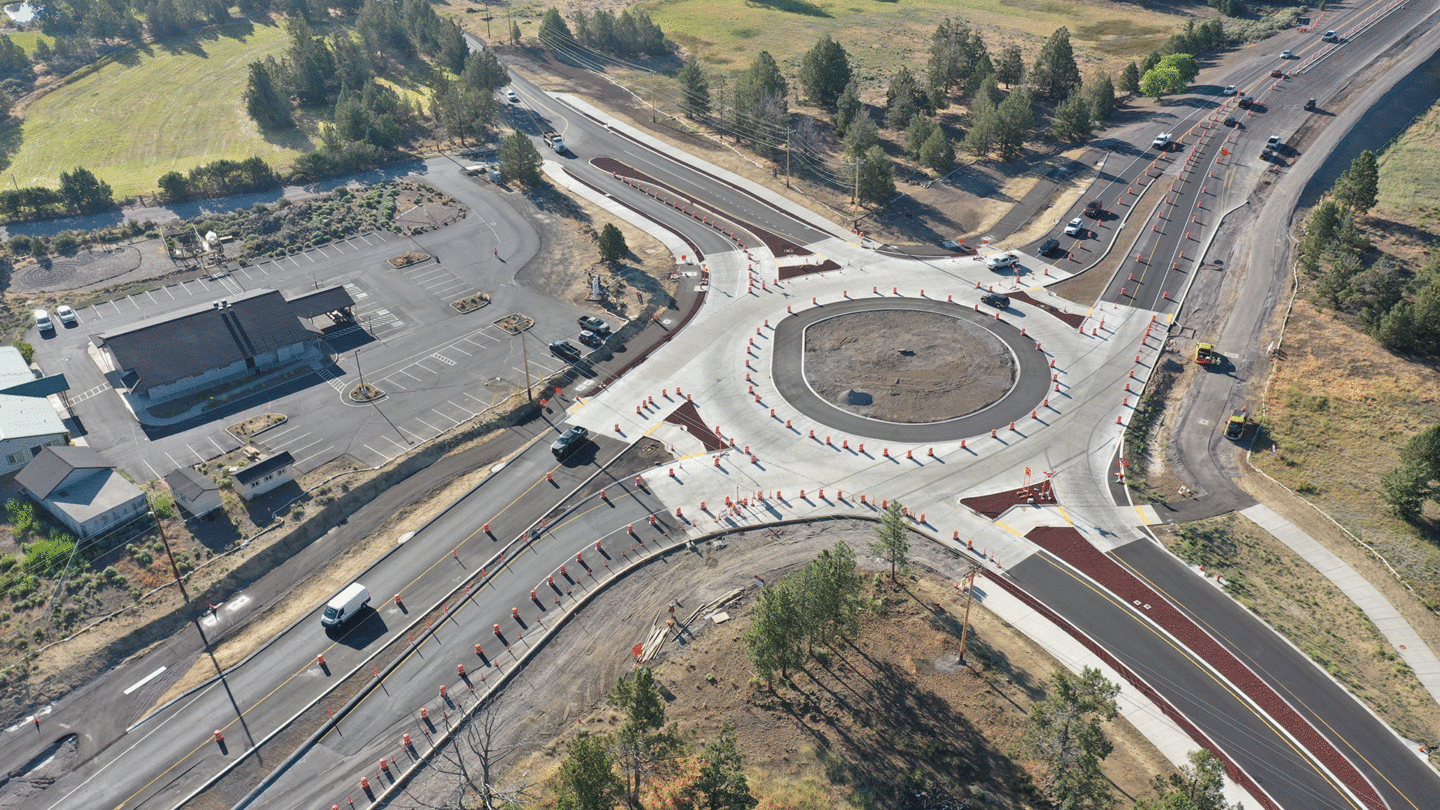
U.S. 20/Cooley Road roundabout construction on June 30th, 2023.
The first major element of the Bend North Corridor project, the U.S. 20/Cooley Road roundabout, is now open and operational. It is the first of four roundabouts total planned for the corridor. The remaining construction is ongoing and is scheduled to be completed by late 2024. Learn more about this project here.
Plum Street Mini Roundabout – Lancaster, PA
A mini-roundabout at the intersection of Plum Street, Park Avenue, and New Street in the City of Lancaster is being developed in response to residents’ desire to create more of a sense of place, while improving safety, promoting lower speeds, calming traffic, reducing conflict points, and improving operational performance. The project will also improve access for pedestrians and bicyclists while maintaining access for larger vehicles.
The project will reclaim street space in the intersection’s southeast corner through the installation of a parklet that will include landscaping, seating, and sculptural mosaics. Safety and operational improvement goals will be met through a fully mountable central island, splitter islands, curb extensions, setback crosswalks, ADA-compliant curb ramps, and enhancements to street lighting. In addition, the design will enhance the intersection by expanding the urban tree canopy, landscaping elements, and decorative brick patterns. Construction of this project is schedule to be completed in the spring of 2024.
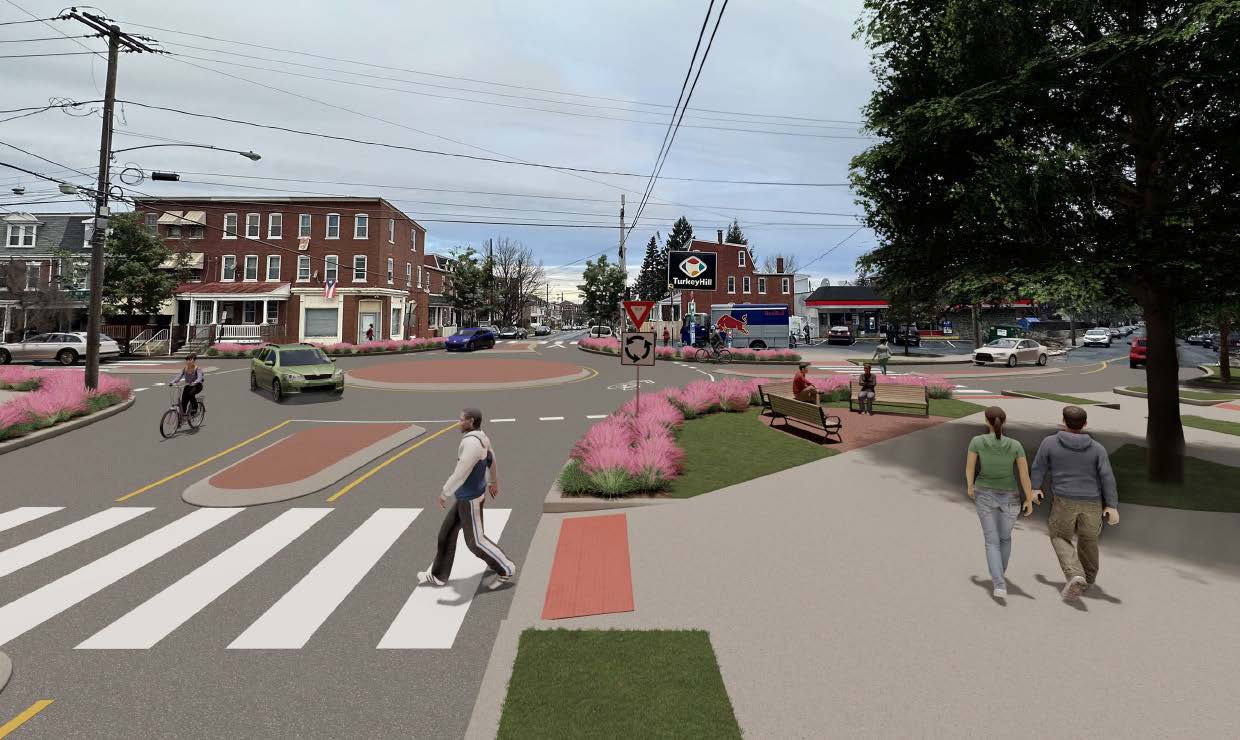
Plum Street mini-roundabout concept rendering.
Lake Nona Region Roundabout Design – Orlando, FL
As part of the 17-square-mile Lake Nona development project, Kittelson collaborated with Donald W. Macintosh & Associates on the design of four multilane roundabouts, three of which are in a series along Luminary Boulevard, a new four-lane arterial roadway. Roundabouts at regular intervals along Luminary Boulevard support drivers maintaining reasonable speeds along the corridor.
A new elementary school is planned adjacent to one of the roundabouts along the corridor. New 12-foot-wide shared-use pedestrian and bicycle paths are provided along each side of Luminary Boulevard that connect to neighborhoods and other network roadways at the roundabouts. Raised crosswalks will enhance driver yielding to pedestrians and bicyclists using the multilane crosswalks as well as support navigation by visually impaired pedestrians.
The project also included the redesign of one existing intersection where the land-use context changes from primarily residential into commercial. The roundabout helps manage speeds and serves as a gateway between the land uses and supports access management for the adjacent shopping center. Our team had the opportunity to lead the traffic analyses, development of the horizontal geometry, and preparation of the signing and pavement marking construction documents for each roundabout. Our team had the opportunity to lead the traffic analyses, development of the horizontal geometry, and preparation of the signing and pavement marking construction documents for each roundabout. Three of the roundabouts are complete with the final roundabout currently under construction.
These are just a few of the many transformational roundabout projects worth celebrating during Roundabouts Week. Join us on LinkedIn this week for more Roundabouts Week content!
